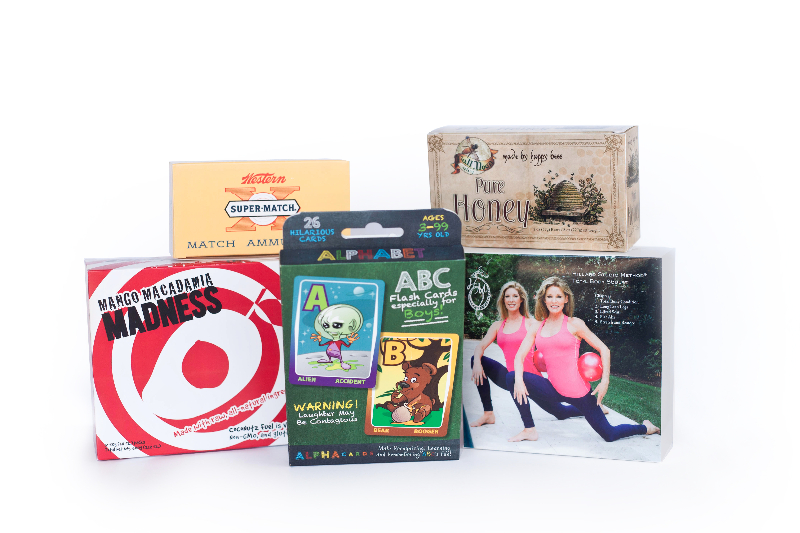Blog
Customized Folding Cartons
Custom Folding Cartons
Custom Folding Cartons: Commonly Used Industry Terms
What is a Custom Folding Carton?
The term “folding carton” may sound new to you but the term has been used since the late 19th century . The term “folding carton” refers to a carton that is made of paperboard. Paperboard is often printed and laminated then sent through machines that cut, glue, and score it. Folding cartons are shipped flat to the consumer and when constructed, they create a container to protect and/or display products.

Common terms from the Folding Carton industry:
Paperboard:
Paperboard is basically a heavy or thick paper-based material. Paperboard can be cut and formed easily while still remaining stable in order to protect the contents of the folding carton.
Kraft Paper or Chipboard:
A type of paperboard manufactured from reclaimed paper stock.
Die Cut:
A cut die is created and used to cut the paperboard when manufacturing a folding carton. The process of cutting the paperboard is referred to as “die cutting” because it is using a specified die to cut the paper. When ordering a custom folding carton, a custom die will be generated to fit the exact dimensions your product requires.
UV Coating:
Ultra-violet (UV) coating can be applied over printed paperboard and will dries through a UV radiation process. The final product is a gloss coating.
Embossing/Debossing:
Embossing or debossing refers to a process of creating a raised or sunken design within the paperboard.
Foil Stamp:
Foil stamp refers to a process that adheres metallic foil to the paperboard. A special foil die is needed along with a designated layer within the art process.
Cutout or Knockout:
A cutout or knockout in a folding carton refers to a design element where the paperboard is cutout of the design to show the contents. This cutout is created within the cut die.
Insert:
An insert is a piece of paperboard that is cut and sometimes glued to help secure the product(s) within the folding carton.
Pop -Up Box:
A pop-up box refers to a box or folding carton that has two purposes:
- To package the contents
- Display the contents.
When the lid of the folding carton is opened, it can be situated to create a display that will easily fit on a counter or shelf.
Straight Tuck Fold:
A Straight Tuck box is the most commonly made box on the market. Straight tuck simply means that flaps on each side fold directly into the box from the front to the back or the back to the front. Both flaps fold in the same direction.
Reverse Tuck Fold:
A Reverse Tuck box means that one of the flaps folds the opposite direction as the other. For example, this side folds from front to back while the other side folds from back to front.
Lock Bottom Box:
A lock bottom box is often used for heavier items. The flaps lock together on the base of the box thus providing added durability and strength. A lock bottom box is often used for heavier items such as candles or glass jars
For more information about the various types of folding cartons, please see our post here...


